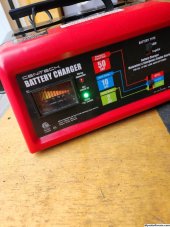tvd1
New Member
- Joined
- May 24, 2022
- Messages
- 43
I have a sealed AGM Renogy 100ah battery thats been in service for a year in an outdoor shed. Its not in terrible shape but I have accidentally let the charge level dip as low as 30%. So today when hooked up to solar, it will charge up to 100%, but as soon as the light source disappears it immediately goes down to 60% with no load on it. Now that the days are so short even with a very light load it rarely goes above 55% at night. I assumed this battery may be trash but I read a few things how batterys can be renewed by people that know what they are doing (not me, lol). I reached out to a local battery provider to see what they say but wondering what others have done. Thanks

 www.renogy.com
www.renogy.com

Deep Cycle AGM Battery 12 Volt 100Ah
Renogy’s 12V Deep Cycle AGM Battery is an excellent choice for standby or daily power needs. Limited time sale, 10% off: Renogy10off. Free shipping
 www.renogy.com
www.renogy.com
Last edited:






